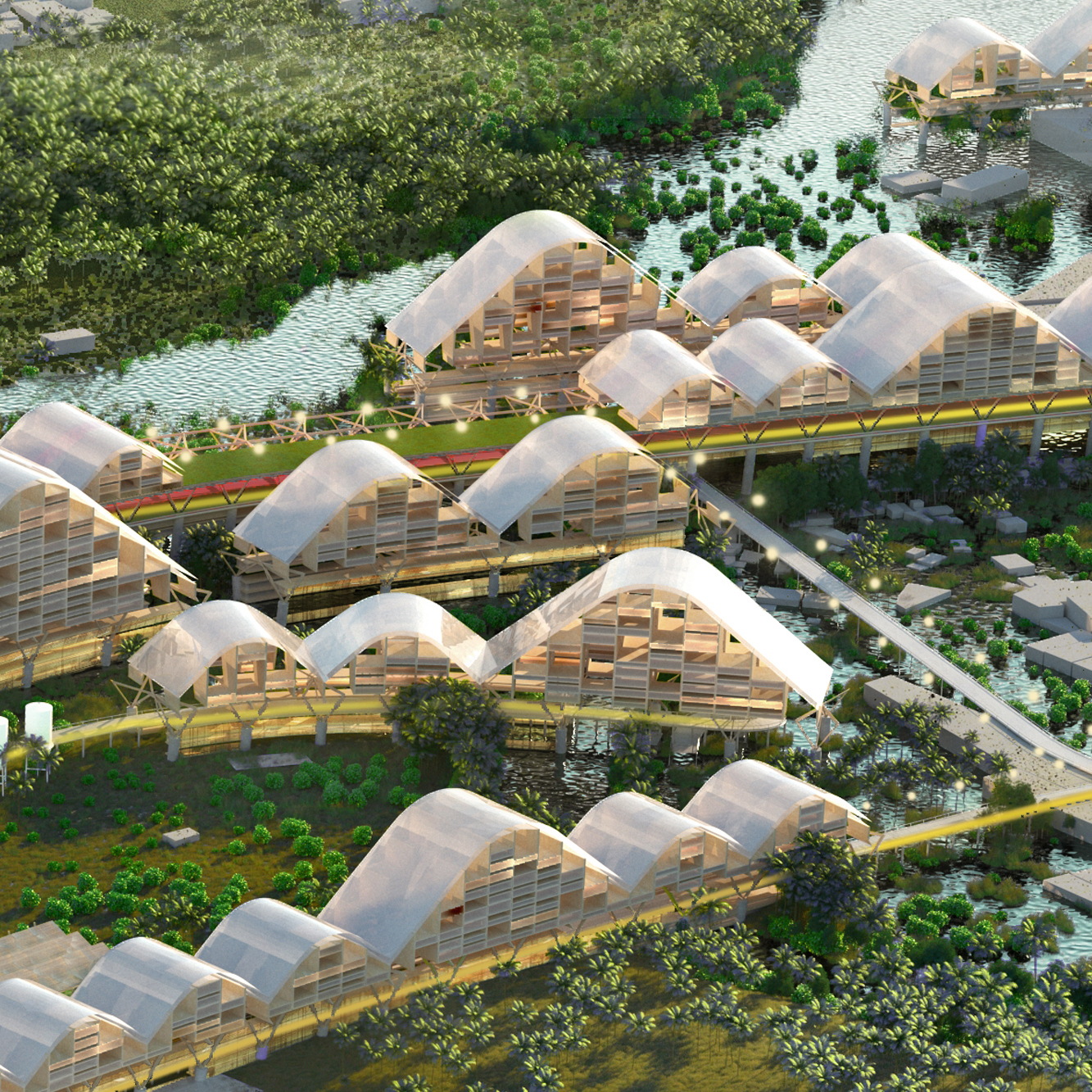︎︎︎
Symbiotic Infrastructures
Resilient Masterplan for Manila´s floods
Manila, Philippines 2019
A densifying
context:
Filipinos inhabiting Luzon Island do not fear the state of risk of
their location. Typhoons, monsoons, flooding, landslides, volcanoes, and earthquakes,
does not hinder the habitat of this part of the archipelago. In fact, with over
60 million inhabitants, Luzon is the fourth most populated Islands in the world.
More than 20 million is already urbanized population which live in Metro Manila,
and the remain 40 million live either in rural conditions or smaller cities
that surround Metro Manila. The now president Duterte, with its motto “Build,
build, build”, is calling for an unprecedent investment in infrastructure that
will improve mobility within Metro Manila and will connect the rural areas to
the city center. This will further intensify the density of the metropolis
through migrating processes, and will improve mobility within Manila, but what
about the floods?
The flooding
problem:
One of the main climatic events with which Manila struggles more,
is flooding caused by the monsoon seasons, and by typhoons, which inundate the
city repeatedly during the year – challenging the existing hard infrastructures
proposed by the previous governments, and decreasing the wellbeing of the most
needed (image x).
Digging in the proposals of Duterte’s presidency (refer to this link),
100% of them are purely to improve mobility, finding no proposal to improve the
flooding condition. Only the World Bank proposes a plan, which is mainly based
on continuing the development of hard infrastructure proposals (such as dams,
barriers, or sea fronts), forecasting techniques, and drainage systems;
elements that are already being challenged with the current situation.
The flooding issues that Manila has is mostly related to the lack
of green spaces, which makes of Manila’s conurbation an impermeable asphalt and
concrete layer that worsen the seasonal floods. Acknowledging the urban
densification, urban footprint and migration processes that will follow the
infrastructure development, and the lack of resilient masterplans, it is
recognized that without a proper masterplan for flooding resiliency, the future
well-being of Manila’s inhabitants is questionable.
A symbiotic infrastructure:
To contribute to Manila’s flooding resiliency, this project
proposes the thesis of multiplying the utility of the infrastructures proposed by
Duterte in a territorial acupuncture fashion (see figure green). This thesis
takes advantage of the way of how this infrastructure is build through the city
– through a series of viaducts and bridges that jump over the existing urban
network, and remain safe in case of floods. In this sense, a railway’s viaduct
will not only serve for mobility purposes, but to inhabit a community, to
propose public spaces, facilities, and commerce to the surrounding
neighborhood.
The case study presented here, takes the North-South Railway
Project (NSRP), a high speed train that connects the most ruralized areas of
Luzon (North and South), and reconfigures its viaduct towards a symbiotic, site
specific intervention. The specific point selected in the railway, is one of
the few green areas within Metro Manila, in between the neighborhoods of
Valenzuela, Malabon, and Caloocan, current attractor points for the incoming rural
population.
team: Gabriel Muñoz Moreno
collaborators: Rafael García-Monge Pozo
location: Manila, Philippines
client: Futurarc
year: 2019
program: masterplan / ecology







